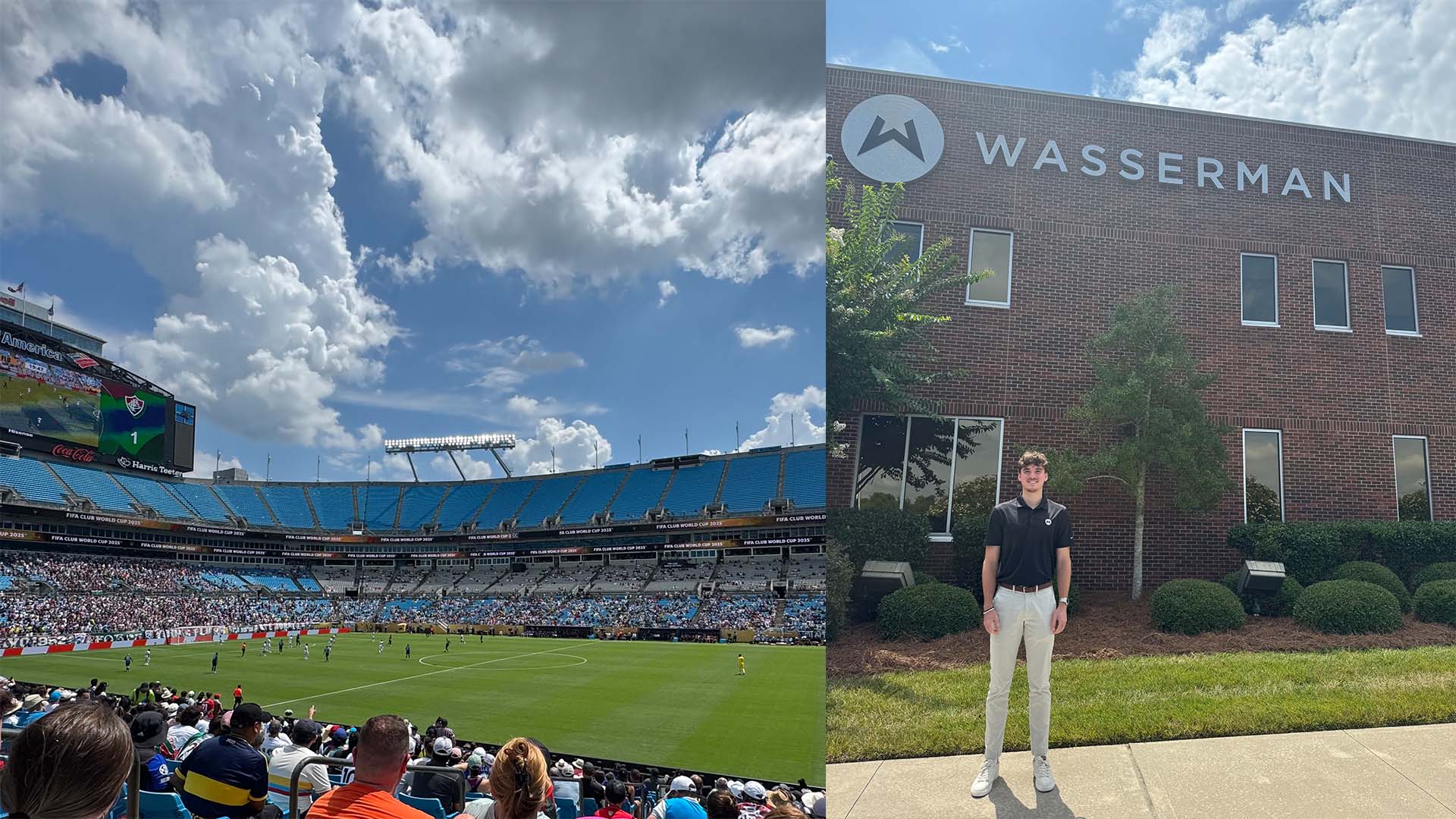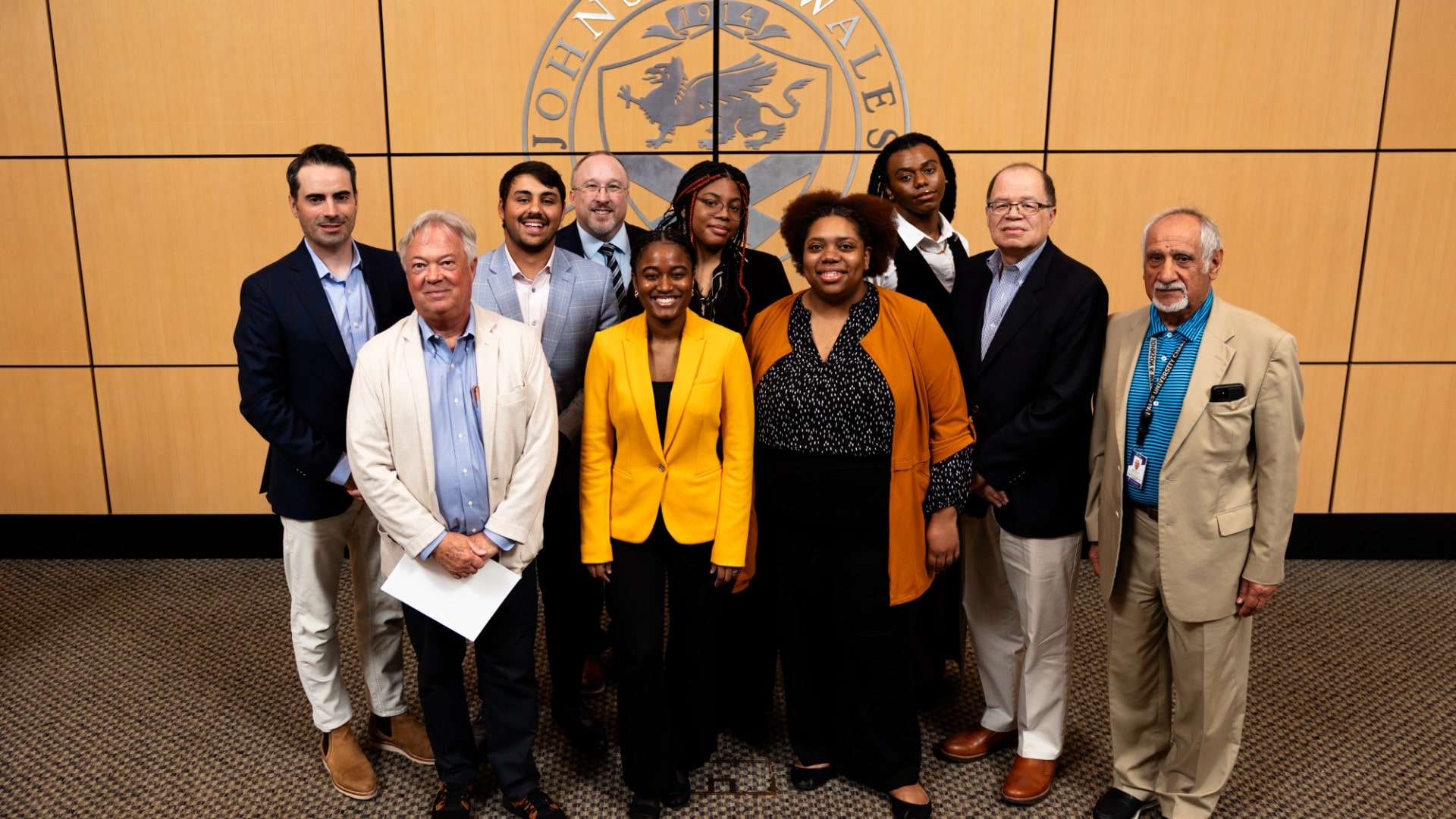Safe Dining During COVID-19: On and Off Campus
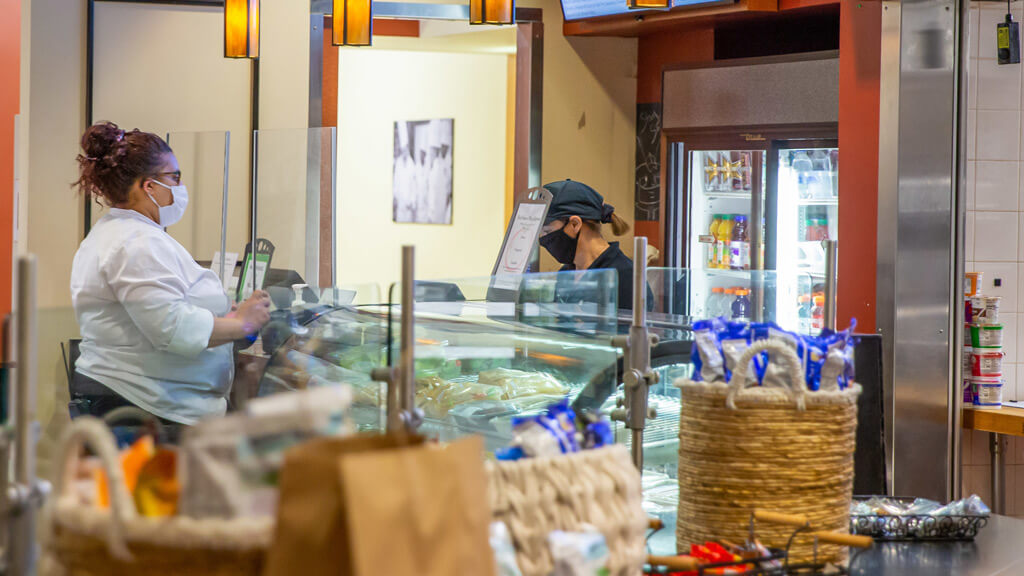
Taking a break from cooking and going to a restaurant was something we all looked forward to regularly. Socializing, having our favorite dish or trying something new was a pastime we took for granted. Then in early spring, COVID-19 came, and all of that changed. Our options became limited to take out and delivery. Later on, limited outdoor seating was added, and then some indoor seating. These choices became the safest ways to limit exposure to the virus for guests and staff at restaurants and other dining facilities — including those at colleges and universities.
It’s hard to keep track of it all, so we asked JWU faculty and staff for updates on the ever-changing food and dining landscape, both on and off-campus.
When JWU decided to reopen campus in July for a group of culinary arts and baking & pastry arts students, changes for student dining were quickly put in place. More changes are underway for the fall semester. Amanda Rotondi, director of campus dining at the Providence Campus, fills us in.
Q. What changes were made at the Providence Campus dining facilities to prepare for students coming back to campus?
- In most cases, when using the dining facilities, you must swipe your I.D. to open an “entrance only” door and leave through an “exit-only door.”
- You’ll see yellow arrows on floors directing the traffic flow, squares to stand on while waiting for your orders, and green circles to stand on in Starbucks while waiting.
- At all registers, guests are separated from cashiers by a plexiglass barrier.
- We have entirely no-contact payment options (except for cash), and students can use their meal swipes without handing over their I.D.
- All buildings have easily accessible hand sanitizer and hand wipe stations.
- The on-campus Starbucks locations are no longer open to the public.
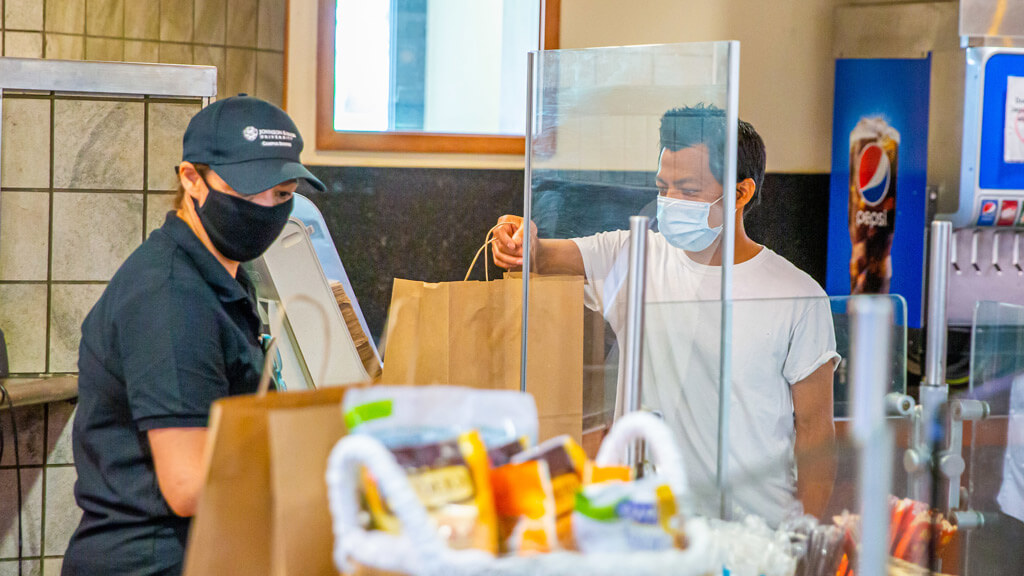
When the summer term started, we began offering in-dining seating and cooked-to-order options. And, there are always food-to-go options. Our grab-and-go choices are not your typical sandwich and chips; they include entrees such as chicken tikka masala, beef and broccoli, and much more. Takeaway options are pre-made and served cold, with the opportunity for heating them at Red Sauce (soon to be Harborside Café), eating them in the dining room, or taking them out to heat on your own.
Q. How did students who came back to campus in July respond to the changes?
The students, staff, and faculty have responded positively. Masks are being worn, guidelines are being followed, and everyone appears to be happy to be back to some normalcy.
Q. What other changes are being made to prepare for more students coming to campus in the fall?
We are ready for more students! We thrive on the hustle, bustle and energy on campus and the dining facilities on both Harborside and Downcity campuses will be open. Our goal is to be open on Monday through Friday before classes start and until 10pm. On the weekends, we’ll be open from 8am to 10pm. We want to ensure we're still offering the variety, options and accommodations students need and want. There will not be any self-service of items that are not pre-packaged, and campus dining employees will serve buffets and salad bars. Seating will be reduced and, in some cases, nonexistent. Our two Starbucks locations will be takeaway only, but Snowden, Clock Tower Lounge, Harbor View and Harborside Café will have some seating options.
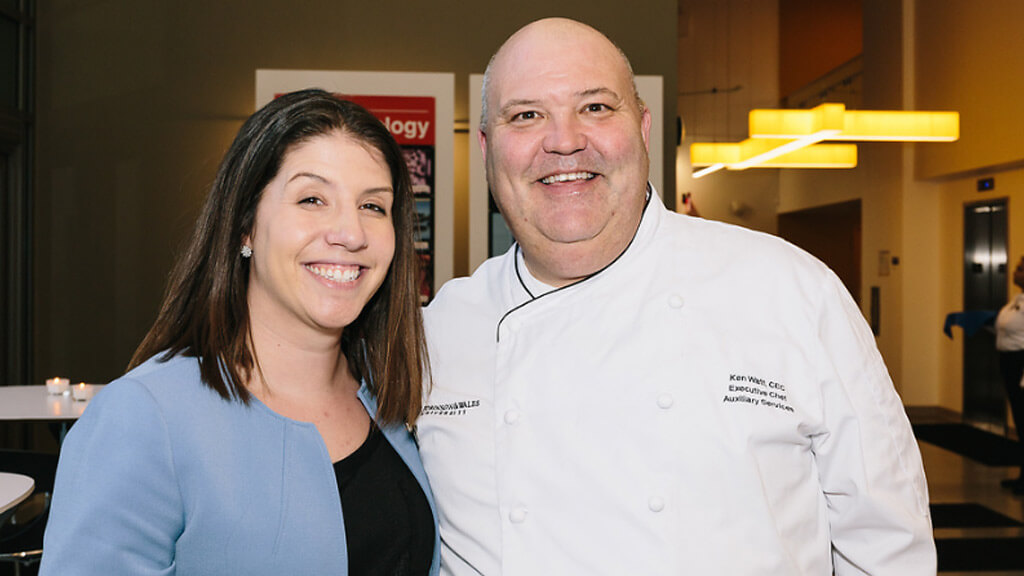
Amanda Rotondi, director of Campus Dining and Ken Watt, executive chef of Auxiliary Services
Q. Will these changes be temporary or permanent?
I cannot wait for the time to come when our dining rooms are full again! Of course, if there are practices we’ve implemented that work and make sense, they will stay in place.
See more details about on-campus dining and other updates for each campus: Providence and Charlotte.
Food and Dining Off Campus
Outside of campus, we’ve all witnessed constant changes to the restaurants we love to frequent. Nicholas Makris, associate professor, and Dean Mistretta, assistant professor and director of catering for Stock Food Group, have decades of food industry experience between them. They shared their views on both the dilemmas and possibilities the restaurant industry faces.
Q. Will the use of third-party delivery services (think Uber Eats, Door Dash, Grubhub) by restaurants continue on the upswing once the pandemic subsides?
Makris: They provided a level of convenience to consumers while helping restaurants boost sales. As the pandemic hit and restaurant dining rooms closed, the use of these services grew and restaurants were hit by fees as high as 30% per delivery. Although they provided some income for restaurants, they didn’t help the restaurants’ bottom line. The services will continue to exist post-COVID-19, but more and more restaurants are looking for ways to deliver food on their own. Also, some third-party delivery services are “capping” their delivery fees, and some are looking at charging restaurants a monthly fee instead of per-delivery fees.
Q. Depending on their locations, restaurants are now limited to take out, delivery, and 50% or so reduced capacity seating. Is this enough to keep them afloat indefinitely?
Makris: Restaurants work on minimal margins. As they struggle to pay their overhead, being dependent on limited capacity, takeout and delivery will not provide enough revenue for some to remain open.

Nicholas Makris, associate professor, and Dean Mistretta, assistant professor
Mistretta: That depends on the individual operation and how it is managed. What are their cash reserves? What is their working capital? Did they go through the formal process of getting COVID release money? That’s really an individual management, ownership question.
Q. Is it possible for takeout, delivery and meal kit options to provide the same level quality of food we were used to with dine-in experiences?
Makris: As more restaurants depend on takeout and delivery, they’re facing the ways food will “carry.” To provide the same level of consistency as dine-in experiences, they must continue offering the same level of food to take home. The challenge isn’t the quality, but how it’s packaged and handled during the delivery process.
Q. With meal kits saving people time and trips to markets, while also offering easy access to meals, how will they fare once the pandemic has subsided? For busy people, they are a huge convenience, pandemic or not.
Makris: As people found themselves working from home, meal kits were a creative, convenient and economical way to feed their family. As the economy tightens amid rising unemployment, the popularity of meal kits will depend on people’s willingness to continue paying for this convenience.
Q. Do you see restaurants ever going back to the way things were pre-COVID-19?
Makris: The question is not if, but when. Like other pandemics, COVID-19 will, at some point, come under control (most likely when a vaccine is developed). In the meantime, the question is, will the economy be able to sustain this level of unemployment and declining GDP?
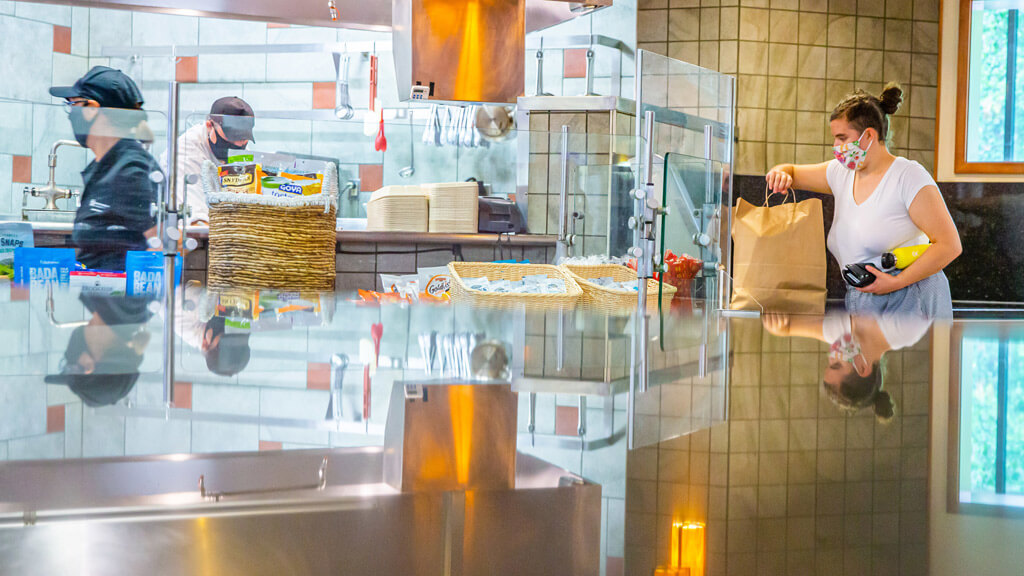
Q. Will some changes made to restaurants during the pandemic remain in place when the virus is behind us?
Mistretta: I think some of the initiatives will carry through. We have plexiglass on our host station, which we didn’t have before. It’s the first thing people see when walking in. It’s what we need to do. It protects our staff and our customers, and it’s not that intrusive.
Q. What about stepped-up sanitizing and cleaning guidelines — will those continue for the long term?
Mistretta: I think they should. They should have been in place a lot sooner. It’s minimal, and it makes it safer for everyone.
Q. Have you seen any problems with restaurant staff not wanting to wear masks or follow cleaning guidelines?
Mistretta: I’ve got to tell you, I am so impressed with how the workforce has adjusted and am encouraged, because of that, that we will get through this and bounce back to the levels we were at before and where we need to be.
Video: Amanda Rotondi shows all that's being done to keep on-campus dining safe.
